Echo
This statement is used to output the data to the screen or printing text on
screen.
Ex: –
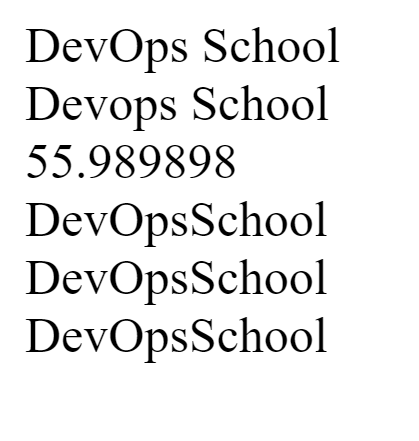
echo with HTML

echo with Variables
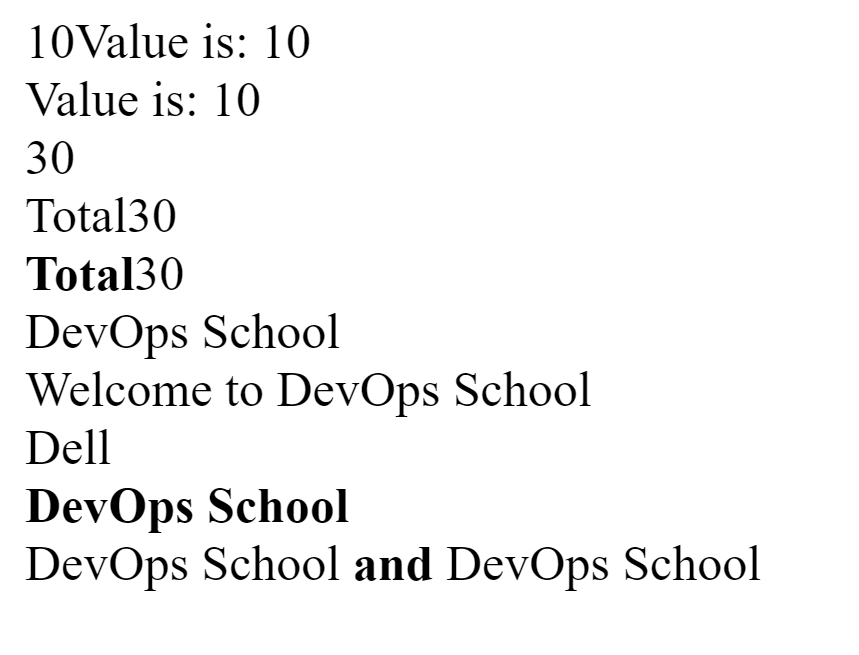
This is very similar to echo statement a way of displaying text.
Ex-

This statement is used to output the data to the screen or printing text on
screen.
Ex: –



This is very similar to echo statement a way of displaying text.
Ex-

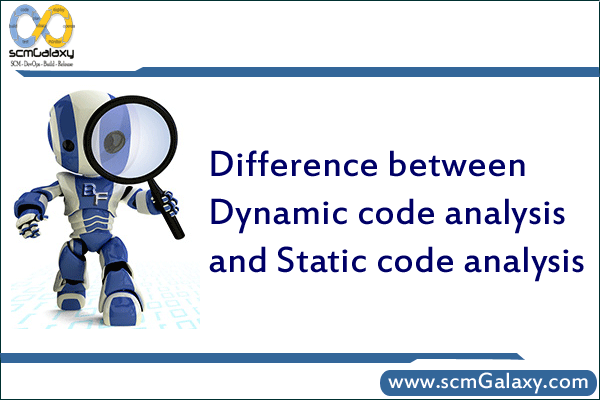
Difference between dynamic code analysis and static code analysis
Static analysis is the testing and evaluation of an application by examining the code without executing the application whereas Dynamic analysis is the testing and evaluation of an application during runtime.
Many software defects that cause memory and threading errors can be detected both dynamically and statically. The two approaches are complementary because no single approach can find every error.
The primary advantage of dynamic analysis: It reveals subtle defects or vulnerabilities whose cause is too complex to be discovered by static analysis. Dynamic analysis can play a role in security assurance, but its primary goal is finding and debugging errors.
Level of in-depth review
The key difference between a static and dynamic code analyser is the how in-depth the code review
process is. By default, static code analysis combs through every single line of source code to find flaws and errors. For dynamic analysis, the lines of code that get reviewed depend upon which lines of source code are activated during the testing process. Unless a line of code is interacted with, the dynamic analysis tool will ignore it and continue checking active codes for flaws. As a result, dynamic analysis is a lot quicker since it is able to review code on the fly and generates real-time data. However, static code analysis provides peace of mind that each and every line of source code has been thoroughly inspected. It may take longer, but static code analysis runs in the background and is crucial for creating a flawless web application.
Catching errors early and making recommendations
The primary advantage of static analysis: It examines all possible execution paths and variable values, not just those invoked during execution. Thus static analysis can reveal errors that may not manifest themselves until weeks, months or years after release. This aspect of static analysis is especially valuable in security assurance, because security attacks often exercise an application in unforeseen and untested ways.
As mentioned before, dynamic analysis reviews codes during the testing process and generates real-time results. While it is great for fine-tuning the user experience, it has one major drawback: any errors highlighted by dynamic code analysis tools requires developers to go all the way back to the source code, make changes to the code itself and then make changes to everything that has been modified as a result of changing the source code. This is a very time consuming and expensive process; one that companies and developers like to avoid at all costs. Static code analysis tools highlight any errors immediately and allow developers to makes changes before proceeding any further. Moreover, static code analysis tools are more feature-packed than their dynamic counterparts. One important feature is the number of errors it can detect and the recommendations it can make to fix that error. If configured, static code analysers can automatically make the required changes and let developers know what changes have been made.
Cost of code analysis tools
Just like any other business, software application companies have to find a fine balance between application costs and profit margins. With respect to price, static code analysis tools are always cheaper than dynamic analysers. Moreover, having a dynamic code analyser requires a company to hire professionals trained in the use of dynamic analysis tools. A static code analysis tool can be used by any web developer with ease, thus guaranteeing that it won’t turn out to be a long-term expenditure.
Static code analysers are absolutely essential for application developers, whereas dynamic code analysers can only be used in conjunction with static analysis tools.

There is not any official distinguished between code Coverage and Test Coverage. Some practitioner has expressed their difference opinion in terms of defining Code Coverage and Test Coverage.
Code coverage and test coverage metrics are both measurements that can be seful to assess the quality of your application code. Code coverage is a term to describe which application code is exercised when the application is running.
Whereas Test coverage refers to metrics in an overall test-plan. In this expert response, you’ll learn how quality assurance professionals use both of these metrics effectively.
Another definition found over the google search as below;
Code coverage is a measure of how much code is executed during testing &
Test coverage is a measure of how many test cases have been executed during testing.
Lets know about Code Coverage by definition more in details.
In computer science, code coverage is a measure used to describe the degree to which the source code of a program is tested by a particular test suite. A program with high code coverage has been more thoroughly tested and has a lower chance of containing software bugs than a program with low code coverage. Many different metrics can be used to calculate code coverage; some of the most basic are the percent of program subroutines and the percent of program statements called during execution of the test suite.
There are a number of coverage criteria, the main ones being:
[Taken from Wikipedia]
Simply put, code coverage is a way of ensuring that your tests are actually testing your code. When you run your tests you are presumably checking that you are getting the expected results. Code coverage will tell you how much of your code you exercised by running the test. Your tests may all pass with flying colours, but if you’ve only tested 50% of your code, how much confidence can you have in it?
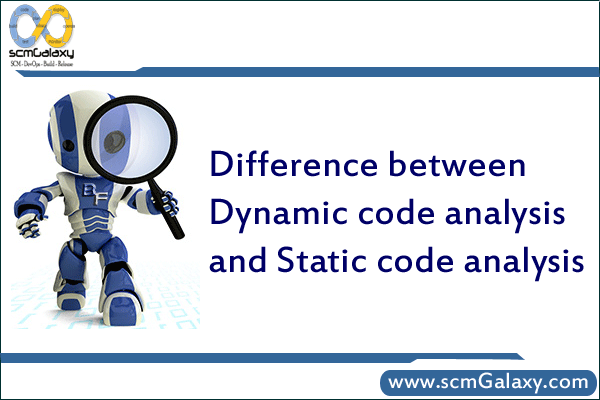
Difference between dynamic code analysis and static code analysis
Static analysis is the testing and evaluation of an application by examining the code without executing the application whereas Dynamic analysis is the testing and evaluation of an application during runtime.
Many software defects that cause memory and threading errors can be detected both dynamically and statically. The two approaches are complementary because no single approach can find every error.
The primary advantage of dynamic analysis: It reveals subtle defects or vulnerabilities whose cause is too complex to be discovered by static analysis. Dynamic analysis can play a role in security assurance, but its primary goal is finding and debugging errors.
Level of in-depth review
The key difference between a static and dynamic code analyser is the how in-depth the code review
process is. By default, static code analysis combs through every single line of source code to find flaws and errors. For dynamic analysis, the lines of code that get reviewed depend upon which lines of source code are activated during the testing process. Unless a line of code is interacted with, the dynamic analysis tool will ignore it and continue checking active codes for flaws. As a result, dynamic analysis is a lot quicker since it is able to review code on the fly and generates real-time data. However, static code analysis provides peace of mind that each and every line of source code has been thoroughly inspected. It may take longer, but static code analysis runs in the background and is crucial for creating a flawless web application.
Catching errors early and making recommendations
The primary advantage of static analysis: It examines all possible execution paths and variable values, not just those invoked during execution. Thus static analysis can reveal errors that may not manifest themselves until weeks, months or years after release. This aspect of static analysis is especially valuable in security assurance, because security attacks often exercise an application in unforeseen and untested ways.
As mentioned before, dynamic analysis reviews codes during the testing process and generates real-time results. While it is great for fine-tuning the user experience, it has one major drawback: any errors highlighted by dynamic code analysis tools requires developers to go all the way back to the source code, make changes to the code itself and then make changes to everything that has been modified as a result of changing the source code. This is a very time consuming and expensive process; one that companies and developers like to avoid at all costs. Static code analysis tools highlight any errors immediately and allow developers to makes changes before proceeding any further. Moreover, static code analysis tools are more feature-packed than their dynamic counterparts. One important feature is the number of errors it can detect and the recommendations it can make to fix that error. If configured, static code analysers can automatically make the required changes and let developers know what changes have been made.
Cost of code analysis tools
Just like any other business, software application companies have to find a fine balance between application costs and profit margins. With respect to price, static code analysis tools are always cheaper than dynamic analysers. Moreover, having a dynamic code analyser requires a company to hire professionals trained in the use of dynamic analysis tools. A static code analysis tool can be used by any web developer with ease, thus guaranteeing that it won’t turn out to be a long-term expenditure.
Static code analysers are absolutely essential for application developers, whereas dynamic code analysers can only be used in conjunction with static analysis tools.
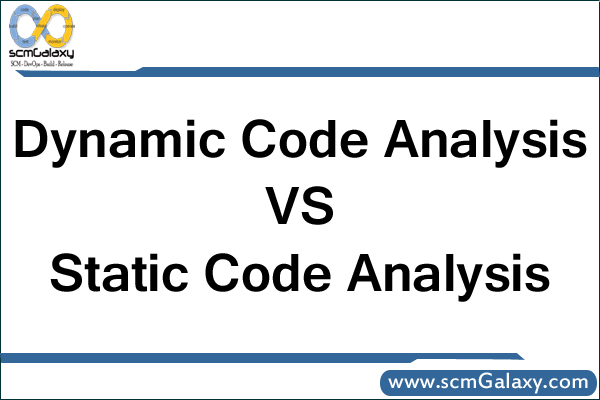
Difference between dynamic code analysis and static code analysis
Static analysis is the testing and evaluation of an application by examining the code without executing the application whereas Dynamic analysis is the testing and evaluation of an application during runtime.
Many software defects that cause memory and threading errors can be detected both dynamically and statically. The two approaches are complementary because no single approach can find every error.
The primary advantage of dynamic analysis: It reveals subtle defects or vulnerabilities whose cause is too complex to be discovered by static analysis. Dynamic analysis can play a role in security assurance, but its primary goal is finding and debugging errors.
Level of in-depth review
The key difference between a static and dynamic code analyser is the how in-depth the code review
process is. By default, static code analysis combs through every single line of source code to find flaws and errors. For dynamic analysis, the lines of code that get reviewed depend upon which lines of source code are activated during the testing process. Unless a line of code is interacted with, the dynamic analysis tool will ignore it and continue checking active codes for flaws. As a result, dynamic analysis is a lot quicker since it is able to review code on the fly and generates real-time data. However, static code analysis provides peace of mind that each and every line of source code has been thoroughly inspected. It may take longer, but static code analysis runs in the background and is crucial for creating a flawless web application.
Catching errors early and making recommendations
The primary advantage of static analysis: It examines all possible execution paths and variable values, not just those invoked during execution. Thus static analysis can reveal errors that may not manifest themselves until weeks, months or years after release. This aspect of static analysis is especially valuable in security assurance, because security attacks often exercise an application in unforeseen and untested ways.
As mentioned before, dynamic analysis reviews codes during the testing process and generates real-time results. While it is great for fine-tuning the user experience, it has one major drawback: any errors highlighted by dynamic code analysis tools requires developers to go all the way back to the source code, make changes to the code itself and then make changes to everything that has been modified as a result of changing the source code. This is a very time consuming and expensive process; one that companies and developers like to avoid at all costs. Static code analysis tools highlight any errors immediately and allow developers to makes changes before proceeding any further. Moreover, static code analysis tools are more feature-packed than their dynamic counterparts. One important feature is the number of errors it can detect and the recommendations it can make to fix that error. If configured, static code analysers can automatically make the required changes and let developers know what changes have been made.
Cost of code analysis tools
Just like any other business, software application companies have to find a fine balance between application costs and profit margins. With respect to price, static code analysis tools are always cheaper than dynamic analysers. Moreover, having a dynamic code analyser requires a company to hire professionals trained in the use of dynamic analysis tools. A static code analysis tool can be used by any web developer with ease, thus guaranteeing that it won’t turn out to be a long-term expenditure.
Static code analysers are absolutely essential for application developers, whereas dynamic code analysers can only be used in conjunction with static analysis tools.

| Unified CodeCount (UCC) | CLOC | POWERSOFTWARE | EZ-Metrics | Metrixware | |
| Languages | |||||
| C/C++, C#, Java, SQL, Ada, Perl, ASP, ASP.NET, JSP, CSS, HTML, JavaScript, VB, and VbScript | YES – All | ADA, Assembly, ASP, C#, C/C++, CSS, Fortran, IDL, HTML, Java, JavaScript, JSP, Perl, PHP, PL/SQL, PowerBuilder, Python, Ruby, ShellScript, Textfiles, VB6 / VB.NET / VBScript, VHDL, Windows Batch and XML | YES ALL | ||
| Platforms | |||||
| Windows & Linux | Linux 2.6.9, Unix, Mac OS X, Windows 9x/Me/XP/Vista, Solaris | BOTH | Windows, Linux planned but no date | Both | |
| Baselines comparison | |||||
| How the tool manages folder hierarchy changes? | The tool tries to match files between two baselines using filenames. As such, two files having the same name in different folder structures can be matched. The tool also detects to match and compare files if the folder is changed while filenames of the files contained in the folder are kept the same. | NA | No information | NA | |
| How the tool manages files which are renamed? | Currently, the tool does not handle files renamed. However, if the file is renamed but its content does not change, the tool considers it as a duplicate. | NA | No information | NA | |
| How the tool manages files or block swapping? | We have not handled swapping blocks of code yet. If the code is copied from one place to another, it is considered as deleted and added. If files are swapped and its filename does not change, the tool can match and compare them. | Available | No information | Available | |
| What is the algorithm used for line change detection? | For comparing between lines, we detect the number of common characters between them and determine whether they are modified or deleted using a threshold. This threshold can be specified through a parameter named –t. For detecting bulk of changed or added code, we implemented our own algorithm for detecting longest common sequences. I am sorry, it is quite complex to be described in this email. We are documenting it in detail, and if you are interested I can send you a copy after it is completed. | SLOC, PERL Mod | No information | NA | |
| Miscellaneous | |||||
| GUI & CLI | CLI | CLI | Both but separate products | GUI | |
| CSV & XML Output | Only TXT | XML | HTML, CSV, RAW XML data | YES | |
| Provide Qualitative metrics? | No. The tool is focused on software size metrics. | NO | yes but separate product | YES | |
| Price | Open Source | Open Source | KEPM (which includes EPM) costs 1,995 USD for a single license or 4,995 for a 5-user license | Commericial | |
| Frequency of the releases | No information in net | Regular | One minor/Major release per month or 2 months. | ||
| Date of last release | December,2009 | Apr-10 | 16-Mar-10 | ||
| Press on the net | Not many reviews available in net | Nope | |||
| Integration with quality platform | Provides different language source for the integration. | Nope | |||
| Recommend | NO | Yes | No | No | |
| Algorithm confidence | The total sizing of analyzed source code files in terms the SLOC count contains the highest degree of confidence. However, the sizing information pertaining to the sub classifications (compiler directives, data lines, executable lines) has a somewhat lower level of confidence associated with them.
Misclassifications of the sub classifications of SLOC may occur due to: (1) user modifications to the UCC tool, |
SLOC algorithm with perl string handling features and SPAN mdoules | NA | ||
| Advantages / Drawbacks / Comments | Output not according to our need. Limited Output Format Delta is not useful Low Processing speed |
Output according to our need. Output in many form(CSV, XML, TXT and Mysql) Delta is useful according to our needs Fast processing |
I tried 30 days trial version. They given web based account/dashboard to add src file and generate output. Which was not functional and could not test it functionality in details. Basic functionality is not working. |

| Tool | Open Source – Commercial | URL |
| CAST | Commercial | www.castsoftware.com |
| Sonar | Open Source | www.sonarsource.org |
| SLOC | Open Source -> Commercial | http://www.dwheeler.com/sloccount/ |
| RSM | Commercial | www.msquaredtechnologies.com |
| LocMetrics | Commercial | www.locmetrics.com |
| EZ-Metrics | Commercial | http://www.jamesheiresconsulting.com/Products.htm |
| Metrixware | Commercial | www.metrixware.com |
| Parasoft (Jtest) | Commercial | www.parasoft.com/ |
| Squale | Open Source | www.squale.org/ |
| KODERS | Commercial | www.koders.com |
| PRACTILINE | www.practiline.com | |
| POWERSOFTWARE | Commercial | http://www.powersoftware.com/ |
| CLOC | Open Source | http://cloc.sourceforge.net/ |
| Unified CodeCount (UCC) | Open Source | http://sunset.usc.edu/research/CODECOUNT/ |

There are many questions asked for the depot migration between server without losing any of the history such as…
There are one solution which i find worth to try it out?
1. Take A full backup of Source perforce server including jounals and file systems using checkpoint featres
2. Then obliterate everything in the Source server that you didn’t want to copy – and remove redundant changelists with p4 change -f -d (refer p4 manuals)
3. Go back to the Source server and obliterate the bit you’ve moved and remove redunant changelists again.
4. Now using p4merge tool, you can merger source and destination servers. this tools will help you for how to merge two separate servers into a single combined server using the Perfmerge++ utility.
What is Perfmerge++?
Perfmerge++ is a tool for merging two Perforce repositories to produce a third repository; it replaces the venerable perfmerge2.pl script. Unlike its predecessor, perfmerge++ does not work with checkpoints, rather it accesses the database files directly and creates new database files in the target directory. These new database files contain the merged content.
Reference:
http://kb.perforce.com/article/911
ftp://ftp.perforce.com/perforce/tools/perfmerge/perfmerge.html